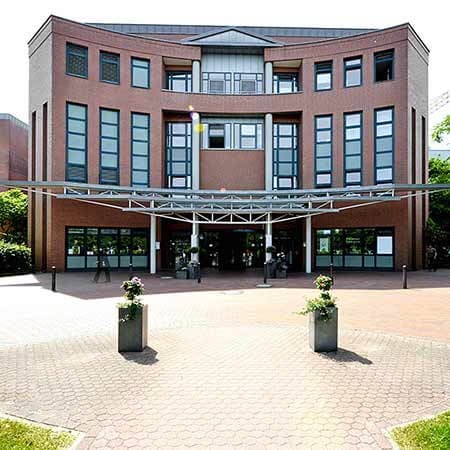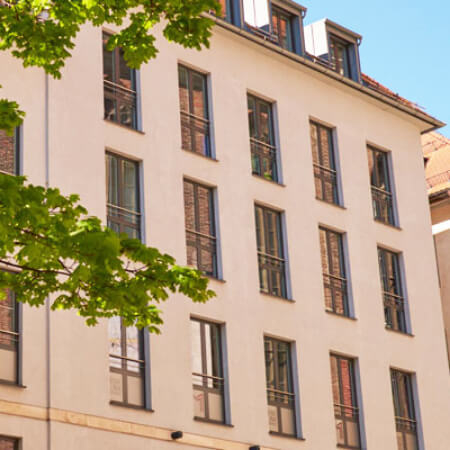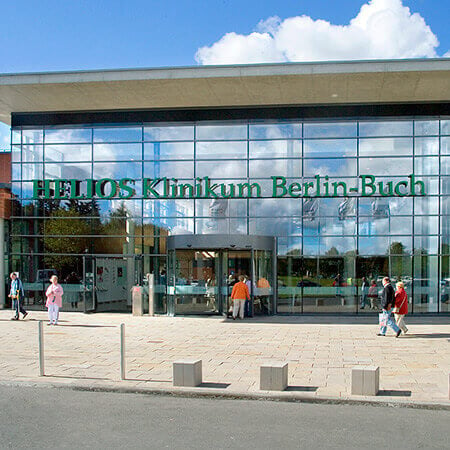Wilms tumour
Due to the difficulties associated with the organization of treatment in Turkey, Switzerland, South Korea and India, we are not currently processing requests to these regions.
If you are interested in treatment in Germany, please leave a request and our specialists will contact you as soon as possible.
Wilms tumour (nephroblastoma) is a malignant tumour of the kidney found mainly in kids. This illness is named after the doctor, who discovered it in 1899 for the first time. It is an embryonic tumour, which arises from the tissues of a developing kidney. The disease is diagnosed before the age of 5 in 75% of cases, though it can be congenital, as well. The other 25% of patients are children from 6 to 14 years old. Wilms tumour is rare among adults.
The Booking Health portal presents 67 German clinics specializing in Wilms tumour treatment
Show all clinics
Wilms tumour – Diagnostics
Visualization techniques are performed to confirm the diagnosis:
- Ultrasound examination
- Computed tomography
- MRI
These techniques help not only to detect a tumour in the kidney, but also to evaluate its size, prevalence of the oncologic process, detect metastases, including distant ones in the liver, lungs and bones.
Other diagnostic techniques are:
- Determination of catecholamines level in urine. It is used after the tumour detection with the help of visualization methods. There is a need to distinguish Wilms tumour from neuroblastoma, which can arise from adrenal tissues.
- Excisional biopsy implies sending the a fragment of the removed tumour for the histological examination. The structure of the sample not only makes it possible to ascertain the diagnosis, but also helps to determine cellular composition of the nephroblastoma. Life prognosis and medical tactics depend on the result. Excisional biopsy is usually performed during a surgical intervention. Histological examination is performed intraoperatively.
Best clinics for the Wilms tumour diagnostics in Germany:
Wilms tumour – Treatment
Treatment program is defined by the stage of the pathological process and histological type of the tumour.
Stages of Wilms tumour are:
- Stage 1 – a tumour is restricted by a kidney borders or removed
- Stage 2 – a tumour crossed the kidney borders, but was completely removed
- Stage 3 – tumour has large size and metastases are present in the lymph nodes; tumour has remains in the wound edges after its removal or tumour has ruptured during the operation
- Stage 4 – there are distant metastases
- Stage 5 – Wilms’ tumour is detected in the both kidneys
Wilms tumour is removed at all the stages, as this is a basis of treatment. They use radical or partial nephrectomy. Mostly, a kidney is completely removed.
Doctors also remove the following parts:
- Fat tissue
- Lymph nodes
- Ureter
- The adrenal gland
If a tumour was detected in both kidneys (5% of patients), then one of the following three treatment tactics is applied:
- Both kidneys fragments affected by a tumour are removed (if malformations are small).
- One kidney is completely removed (if a tumour has a large size) and the second one is partially removed.
- Both kidneys are removed and a patient receives dialysis several times a week. Afterwards it is possible to transplant a donor kidney.
Chemotherapy is used as an additive measure at all stages. It is rarely used for the first stage treatment, only if the risk of recurrence remains high. In European hospitals medications are prescribed before the intervention, and in the USA – afterwards. It remains unknown which way is more effective.
Radiation therapy is sometimes administered before the intervention, though only if a malformation exceeds the borders of a kidney. It eases the removal of nephroblastoma and lowers the risk of the tumour rupture during the intervention. Radiation of the whole abdominal cavity is done post-operatively if a tumour has ruptured.
Wilms tumour – Innovative treatment
While the favourable histological forms of the Wilms tumour are successfully cured by a combination of surgery and drugs, the adverse forms of this cancer continue to be poorly amenable to therapy. Another promising way of treatment is the use of Topotecan and Irinotecan medications. Trials aimed to access their effectiveness are ongoing.
Research is conducted for the possibility to transplant stem cells. Doctors presuppose that it will help patients to undergo more intensive chemotherapy aimed at the destruction of the histologically unfavourable types of Wilms tumour. At the moment, it is not known whether such a therapeutic approach will prove to be beneficial. Treatment technique has not yet been introduced into clinical practice.
Best clinics for the Wilms tumour treatment in Germany:
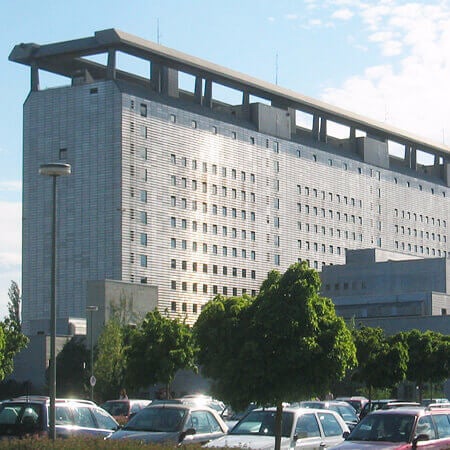
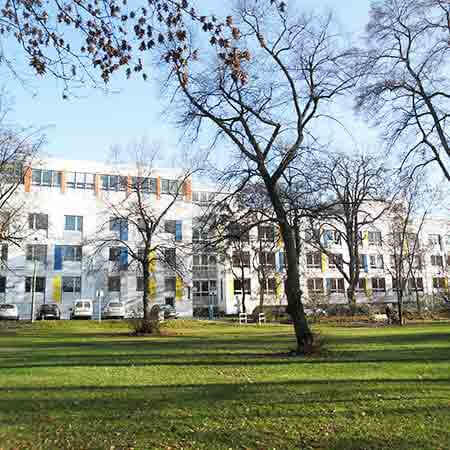
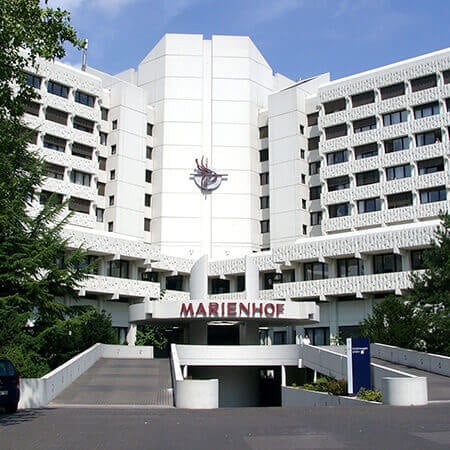
Catholic Clinic Koblenz-Montabaur
Wilms tumour – Rehabilitation
After treatment of complex oncological diseases most patients require rehabilitation. It includes the following aspects:
- Prevention of complications that may occur as a result of treatment. It can be pneumonia, lymphostasis, thromboembolic or infectious complications.
- Restoration of general health. The elimination of the consequences after surgeries and chemotherapy is carried out. The functions of internal organs are restored with the help of various medical and rehabilitation measures.
- Restoration of occupation. A person must not just stay alive. He must have physical and intellectual capabilities, which are sufficient for employment.
- Psychological support. First of all, it is required for patients, whose occupational performance was harmed because of the disease. Patients with deterioration of appearance also will benefit from psychological help.
- Restoration of appearance. If necessary, you can use surgical and other methods in Germany to restore appearance defects caused by cancer. For example, to carry out the reconstruction of the breast.
- Social and domestic rehabilitation. A person with reduced workability is trained to act in the society and perform everyday tasks in new conditions.
In German clinics, rehabilitation is carried out in a comprehensive manner. The patients are provided with qualitative care here. Doctors' monitoring and conservative treatment allow to avoid complications, which usually happen after treatment of oncological diseases. Psychotherapy, physiotherapy and physical therapy are actively used in Germany.
Specialists in different medical spheres take part in the rehabilitation process. These are massage therapists, speech therapists, specialists in physiotherapy exercises, physiotherapists. Social and occupational therapy is carried out, as well. If necessary, people are taught how to eat properly, take care of a colostomy or urostomy, etc.
In Germany, rehabilitation is carried out with the maximum level of comfort for the patient. A person feels the results quite quickly and it improves his motivation and promotes further recovery.
Author:
The article was edited by medical expert, board certified Dr. Nadezhda Ivanisova. For the treatment of the conditions referred to in the article you must consult a doctor; the information in the article is not intended for self-medication!
Source:
Cancer Treatment Centers of America
The cost of services includes
Here you can find the cost of treatment for this disease at the German University Hospitals. Leave a request and we will provide a free consultation with a doctor and will start organizing the whole treatment process.
The program includes the following:
- Issuing of an invitation for getting a visa for treatment as quick as possible
- Fixing an appointment at a time convenient for you
- Preliminary organization of a comprehensive examination and discussion of the forthcoming treatment plan
- Arranging transfer from the airport to the hospital and back to the airport
- Provision of interpreting services and services of a personal medical coordinator
- If necessary, assistance in the organization of further surgical treatment
- Provision of a medical insurance against treatment complications covering up to 200,000 euro
- Preparation and translation of medical records and recommendations from the hospital
- Assistance in the subsequent communication with your attending physician, including consultations on repeated X-ray images through the unique medical document management system E-doc
